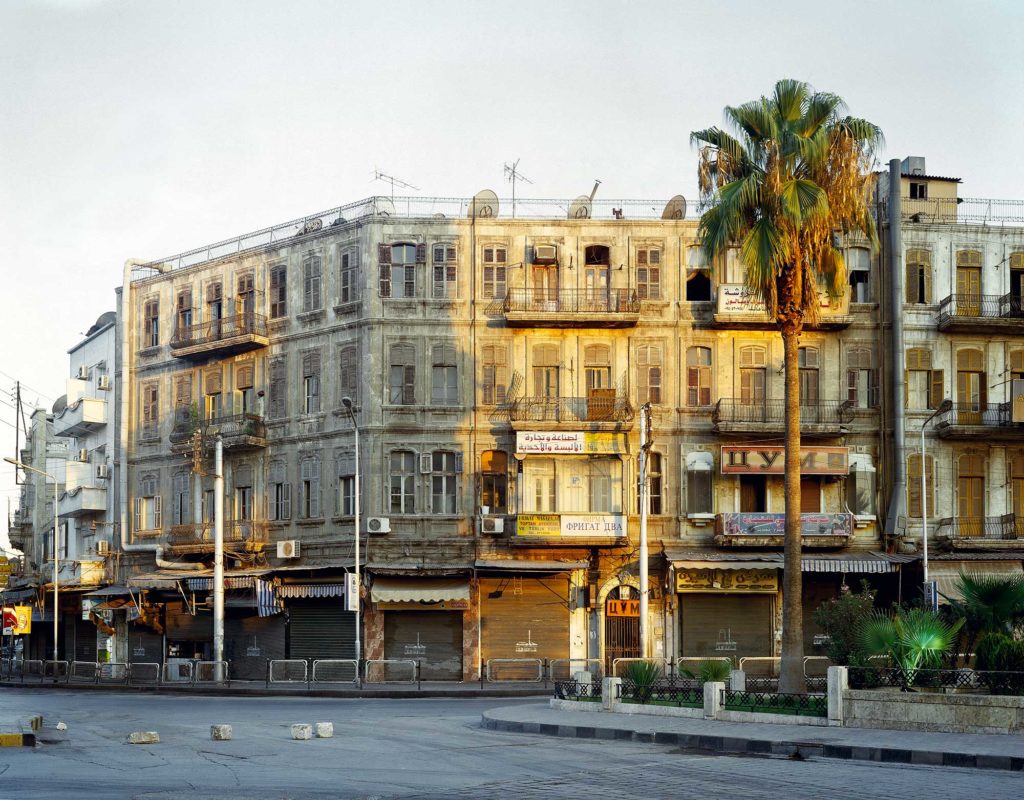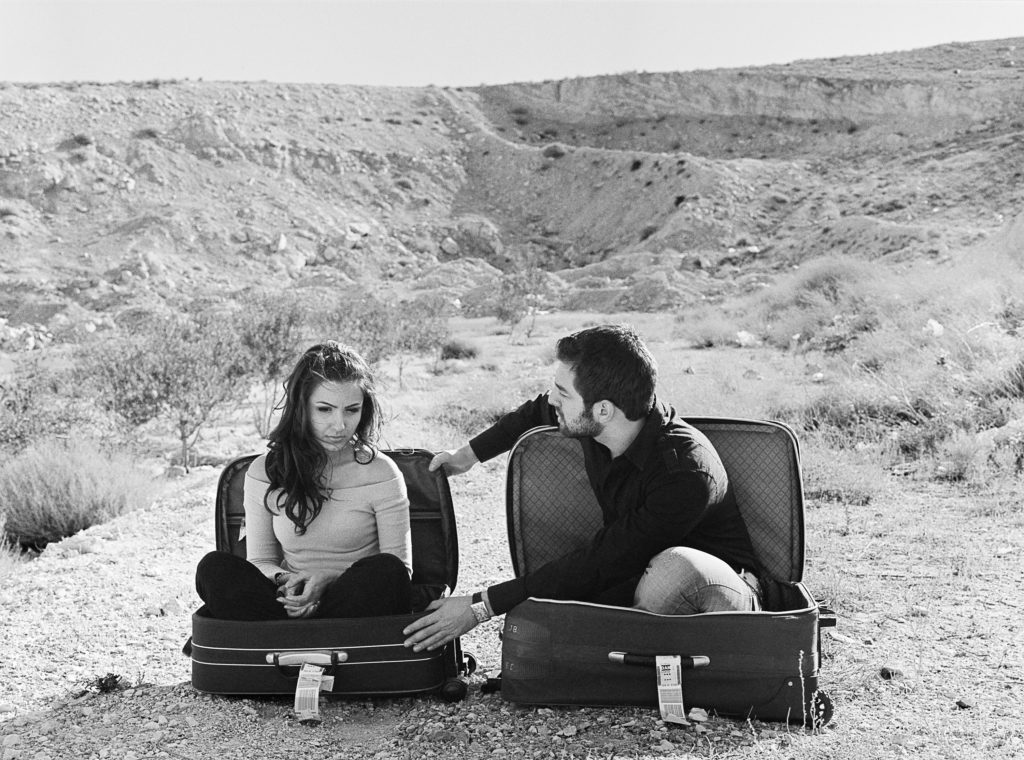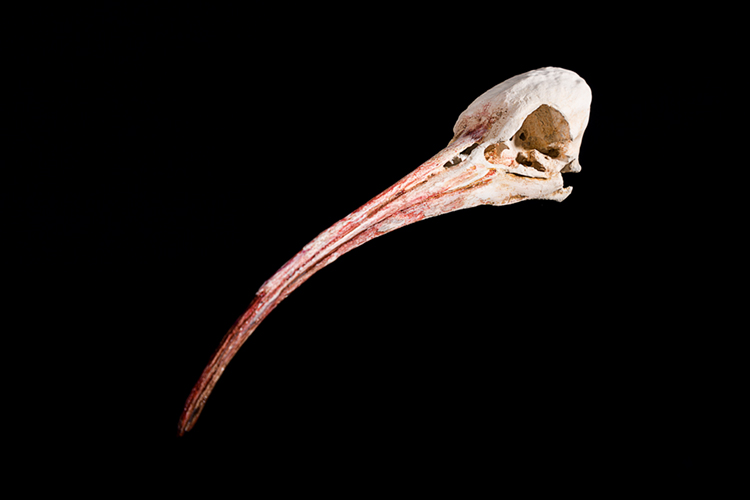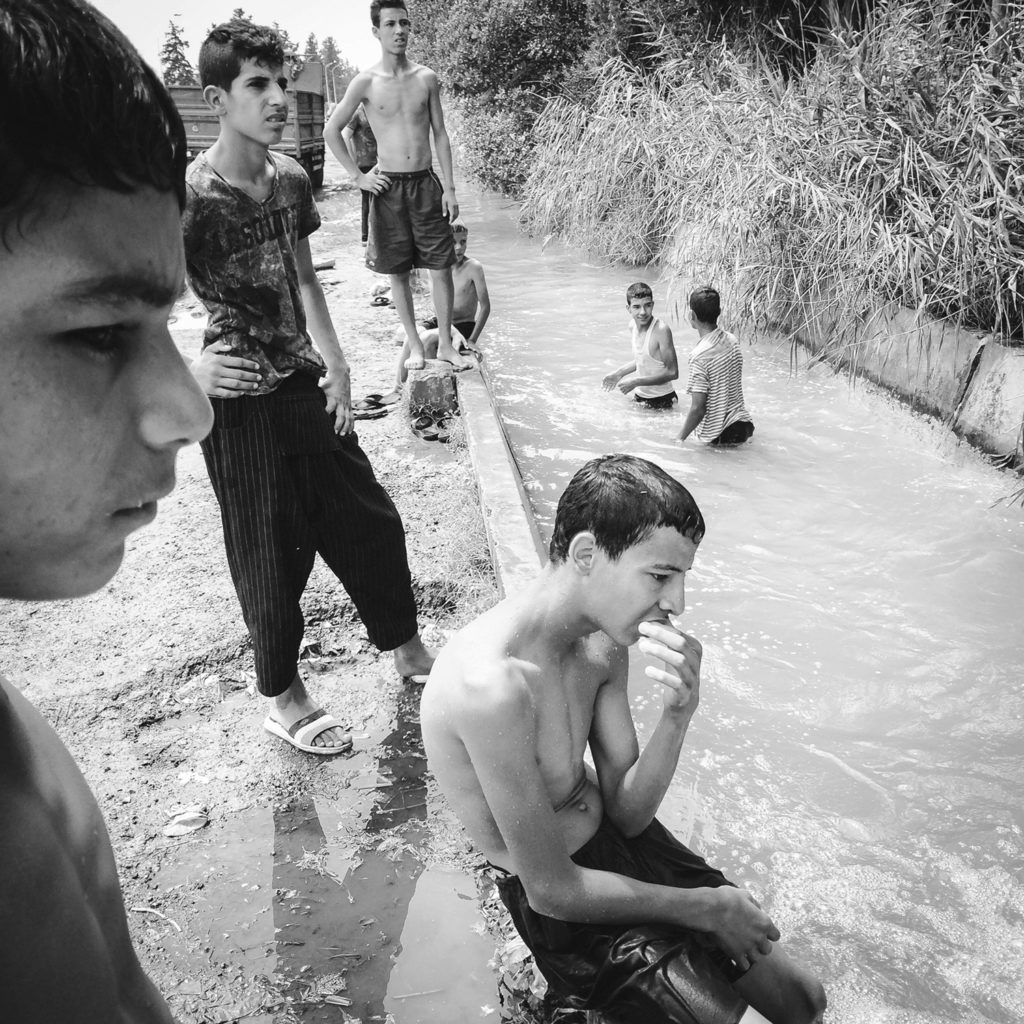How Photographers Responded to the Arab Spring
Ten years after protests ignited across North Africa and the Middle East, how can artists give meaning to revolution?
Samar Al Summary, Teacher/Boss, Lebanon, 2020
Courtesy the artist
Hrair Sarkissian traced the flight path of a migratory bird and found it looked exactly like a noose. He constructed a small model of the building where he spent most of his life in Damascus, then, over seven hours, bashed it to bits with a sledgehammer, pausing after every strike to take a picture. Maha Maamoun used literary fiction, cinematic history, and a cache of YouTube videos documenting the nighttime break-ins at state security buildings in Cairo (and elsewhere in Egypt) to convey the weird inner fantasies let loose by periods of political unrest. She made works based on the stories of a man haunted by visions and a drug dealer who turned into an animal hybrid of zebra and goat. Samar Al Summary scoured Beirut for signs of survival and resistance at a time of imminent economic collapse. In that blighted city, heaving with protest, she captured not a single suffering body but the deep layers and delicate textures of material poverty, an ethos of improvisation hovering just above ruin.
A decade has passed since the start of the so-called Arab Spring, when a movement for radical change erupted in Tunisia and Egypt, rolled across North Africa and the Middle East, and spilled down into the Gulf. People were fed up with corrupt and autocratic rulers, unemployment, lack of opportunity and mobility, hunger, and the increasingly threadbare quality of their lives. From the beginning, young protesters and their ideological elders spoke of their movement in terms of revolution. The demonstrations were first sparked by ugly events: the Tunisian street vendor Mohamed Bouazizi burning himself to death in the interior town of Sidi Bouzid, and the Egyptian millennial Khaled Said dragged out of an internet café and beaten lifeless by police in the coastal city of Alexandria. The protests grew, in part, because images of young people demonstrating in public and jostling for change circulated widely on social media and in the press. Exuberant crowds on Tunis’s Avenue Habib Bourguiba and in Cairo’s Tahrir Square forced the regimes of Zine al Abidine Ben Ali and Hosni Mubarak to fall. No matter what happened after, much of the initial footage, like the electrifying physical experience of being in those crowds, was beautiful and exhilarating and brave.

Courtesy the artist
But the outcomes for almost every country where protests took place—from the end of 2010, throughout 2011 and after, and into the periodic resurgences occurring to this day in Algeria, Iraq, Lebanon, and Sudan—have been terrible. Syria descended into civil war. Yemen and Libya were left in total disarray (both countries are currently deemed failed states). Egypt is now more authoritarian than ever. The trajectory of the Arab Spring has been so dismal that many participants and observers disavow the notion that it was ever a movement at all, that the narrative of disparate events strung together into a single story had any coherence beyond useless generalities. That shift has put artists and image makers in a curious bind. On one hand, there was tremendous hunger for work addressing the events of the Arab Spring, particularly from the art market and from museums in the years after 2011. On the other, any serious attempt to make sense of what happened seems delusional and as doomed to fail as the revolutions themselves.
Perhaps for those ostensibly paradoxical reasons, some of the most thoughtful bodies of work to arise from this long and painful decade are also the subtlest. They come at the Arab Spring from odd angles. Works by Sarkissian, Maamoun, and Al Summary, and others by Omar Imam, Kamel Moussa, Fethi Sahraoui, and Katia Kameli, give shape and meaning to the fleeting possibility, to the crack in the way things were, to the sense of an opening that was present in the early protests. If there was anything utopian in the impulses of the Arab Spring, then it can be found in the notion of a “suspended space,” Al Summary’s description of what she looks for in the scenes she photographs. It applies to the art of a handful of artists who, like her, address difficult circumstances with integrity, nuance, and immovable specificity. In their work, they hold on to that suspended space for future reference, maybe even for eventual use. In doing so, they use new forms and imaging technologies to address a sadly familiar story without resorting to cliché.

Courtesy the artist and Catherine Edelman Gallery
Sarkissian left Damascus for Europe in 2008, the same year he made an unforgettable body of work called Execution Squares, a series of fourteen lush, eerie images of the sites of public hangings in Aleppo, Damascus, and Latakia. Each picture shows an urban area packed with history but completely emptied of people, taken in the exquisite pale-orange light of early morning. Sarkissian hasn’t returned to Syria since 2011. In 2014, I asked him if he ever thought about addressing the conflict in his work. Emphatically, he told me, “No.” And, moreover, he wouldn’t allow Execution Squares to be shown in a context where it would be misunderstood—where it would be mistaken for an illustration of events in Syria after the start of the uprising there. Earlier this year, I asked Sarkissian the same question. Again, he said, “No.” He hesitated before continuing, “At least not directly. When it comes to doing something about Syria, I really don’t want to make a work about people who are suffering. Because then it will be hung on a wall and people will say it’s beautiful, or they will say it’s horrible.” He paused, then added, “But I do tell the story of Syria through the story of a bird.”

Courtesy the artist
Final Flight (2018–19) is unusual in Sarkissian’s oeuvre in that it doesn’t feature any of his own photography. Instead, it consists of a nine-hour video he recorded from Google Earth; a print of a photograph borrowed from an Italian diplomat; a map in relief on aluminum; and nine hand-painted sculptures, all cast in resin and bone from the 3-D scan of a skull from the northern bald ibis in a Spanish zoo. The story of the northern bald ibis, one of the rarest bird species in the Middle East, is epic and multifaceted. For Sarkissian, “It’s exactly what the Syrians have gone through,” without being obvious or in your face. The story of a bird that has been endangered, rediscovered, and disappeared makes for a profound metaphor for migration and freedom of movement.
At a time when hundreds of her colleagues have left Egypt for a better life in Europe or North America, Maamoun still lives in the same Cairo neighborhood where she grew up. A cofounder of the Contemporary Image Collective and of the upstart publishing house Kayfa ta, meaning “how-to” in Arabic, Maamoun has developed a singular style combining popular materials and high literary forms. Like Sarkissian’s Execution Squares, one of her best-known works, the nine-minute video 2026 (2010), is often cast, and probably misunderstood, as a work of prophecy. It reenacts an iconic scene from Chris Marker’s landmark film La Jetée (1962), pairing it with an excerpt from an Egyptian sci-fi novel, Mahmoud Osman’s Revolution of 2053: The Beginning (2007), in which a time traveler describes a nightmarish tableau at the pyramids in the aftermath of a revolution far into the future.

Courtesy the artist

Courtesy the artist
For the eight-and-a-half-minute video Night Visitor: The Night of Counting the Years (2011), Maamoun pieced together a riveting sequence excerpted from YouTube clips uploaded by Tahrir Square protesters. Soon after the start of the revolution, they broke into various state security buildings, which had been totally inaccessible during the Mubarak regime. Maamoun deleted all of the accompanying commentary and focused on signs of wealth and leisure that protesters found stashed in the forbidding structures of the state. Even where the footage pauses on the letters of political prisoners, Maamoun emphasizes poetic language over any explosive revelations of fact. Her twenty-five-minute video Dear Animal (2016) interweaves a short story by the writer Haytham el-Wardany, about a drug dealer who turns into a goat with zebra stripes, with the seemingly guileless dispatches of Azza Shaaban, an activist who left Egypt to find spiritual healing in India. Longer and more capacious than her previous works, Dear Animal is Maamoun’s clearest expression to date of a suspended space, which she creates from the disjunction between wildly different source materials.

Courtesy the artist and Collective 220
What’s striking about these evocative works emanating from the Arab world in the decade since the Arab Spring is how little they show the protests themselves. One of Omar Imam’s surreal images, from an untitled series that spans the years before and after the uprising in Syria, shows a young couple seated in two suitcases. They seem to have dropped from the sky into a graveled landscape, the devastating conditions in Syria envisioned only through the extreme tensions they have created among people in love, who are perhaps planning a future and therefore struggling with the decision to stay, separate, or abandon their country. Since 2014, Fethi Sahraoui has been documenting a group of teenage boys in northwestern Algeria, whom he links to the generation now orchestrating the country’s popular uprising in the streets. But Sahraoui’s pictures, in the series Stadiumphilia and Escaping the Heatwave (both 2014–18), never go there. They linger instead in the sports stadiums where his subjects have developed their political consciousness, through the songs and banners of football matches, which are some of the only events where young men in Algeria can gather for entertainment in large numbers. Or they escape to the various locales, including water towers and irrigation channels in addition to the sea, where the boys seek relief from the extreme summer heat.
One of the reasons Samar Al Summary moved to Beirut was to learn a certain method of care and sensitivity from the artists and thinkers of the well-established art scene there (specifically the practitioners associated with Ashkal Alwan’s Home Workspace Program, where Al Summary was a fellow), who had for generations worked through the problems and dangers of photographing in public and on the street. Born and raised in Jeddah, Al Summary grew up poor in Saudi Arabia, a country both renowned and reviled for its riches. She also came of age with the understanding that “being an artist was basically on the edge of criminality.” When she moved to the United States as a teenager, Al Summary was visually overwhelmed. She started taking pictures “as a way to live and be at peace” with the overabundance of detail in the world around her. By the time she left the American Southwest (she studied in Arizona and New Mexico) and returned to the Arab world, she had started to develop her own visual language.

Courtesy the artist
The protests that broke out in Lebanon in 2019, and the horrific explosion in Beirut in August, transformed many things. However, none of the pictures in Al Summary’s ruminative series Trust Beauty Bank and Secure the Door (both 2019–20) focus on the actuality of those events. Instead, Al Summary turns to textures, remnants, and pileups of competing imagery, from advertisements and forgotten campaign posters to cobbled-together homes and businesses stripped of signage. One of the things she looks for is vibrant color, which doesn’t last in the hot, humid climate of the Levantine coast. “Color in a hot climate is a sign of being contemporary,” Al Summary told me. “A place may look like a ruin, but if the color is bright, then it’s still lived in. We have so many images of death— I’m looking for a certain vivacity, a sense of balance and assembled beauty that goes beyond description.” She continued, “In the visual arts, we’re forced to contemplate without drawing conclusions, to be in a suspended space. For artists in the Middle East, when art is dealing with these hot-button issues, when formulas come to mind, it’s difficult to find the poetry of that moment while also being realistic.” The fact that she does so in her photographs may be one of the more important lessons of the last ten years—that even when political actions falter and movements for change fall short, works of art can hold on to the spaces they opened up for memory and for debate, even if the future remains uncertain.
This article originally appeared in Aperture, issue 241, “Utopia,” Winter 2020, under the title “Remains of the Day.” Read more from the issue, or subscribe to Aperture and never miss an issue.























